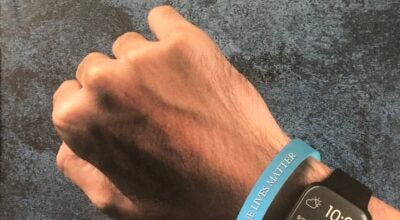Mitzi Parker: Getting rid of that spare tire
Published 6:00 pm Monday, April 27, 2015
If you made a New Year resolution to lose weight, have you been successful in keeping your goal? Let me offer two reasons to revisit your weight loss goals. Summer, which means bathing suit time, is right around the corner and most important your overall health.
None of us would feel safe without having a good spare tire in our trunk, but carrying a spare tire around your middle is not so safe. In fact, research shows that excess fat in the abdominal area increases risk for many serious health conditions including cardiovascular disease, diabetes, fatty liver and cancer of the breast, colon and pancreas.
We often talk about “pinching an inch” at our waist, but it’s the fat underneath our abdominal muscles that we need to worry about. This is called visceral fat and it wraps around our internal organs. Visceral fat, sometimes referred to as Central Obesity, releases proteins, hormones and other substances that can affect our health. Proteins that may be released, called cytokines, increase inflammation in the body that can lead to a heart attack or stroke. One of the hormones released is called resistin. This hormone makes our insulin work inefficiently which increases your risk for pre-diabetes and diabetes.
A man with a waist size above 40 inches or a woman with a waist over 35 inches is classified as having central obesity. Central obesity can also be determined by a waist-to-hip ratio. To calculate this ratio, divide the size of the waist in inches by the size of the hips in inches. If the ratio is greater than 0.9 for men or 0.85 for women, then you have too much visceral fat. Another way to figure out whether someone has too much visceral fat is to use a waist-to-height ratio. To do this, divide the person’s waist size in inches by the person’s height in inches. If the ratio is over 0.5 then the person has too much fat around his/her middle. For example, if a woman is 63 inches tall (5 foot 3 inches) and has a waist of 32 inches, then her ratio is 0.5. That indicates she has too much visceral fat.
Even someone who is a normal weight for their body may still have too much unhealthy visceral fat. A recent long-term study of 51,695 African American women found women that were in the healthy body weight range, but who had large waist sizes, also had an increased risk for serious health conditions just like overweight women.
Healthy eating and regular exercise can help cut visceral fat. If you are overweight, losing weight by eating fewer calories and less fat will help. A group of researchers at Duke University found that aerobic exercise like brisk walking, jogging, biking, swimming or singles tennis was more effective than weight training in eliminating visceral fat. Start taking care of yourself today by eating healthy, drinking plenty of water and exercising.
Mitzi Parker is Sumter County Extension agent/Family and Consumer Sciences, University of Georgia Cooperative Extension Service. Contact her at 229-924-4476



